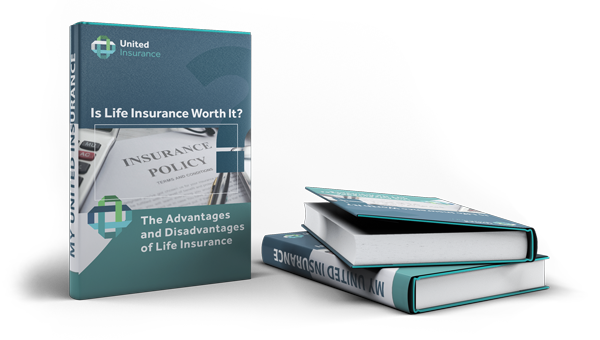
When you are choosing a life insurance policy, it is important to understand the differences with primary vs contingent beneficiaries. Your primary beneficiary is the person who will receive the benefits from your life insurance policy if something happens to you. If your primary beneficiary is not alive when you die, then your contingent beneficiary will receive the benefits. Let’s take a closer look at these two types of beneficiaries!
Primary Beneficiary
Put simply, a primary beneficiary is a person you want to be named as first in line when it comes to receiving certain assets and benefits upon your death. You will typically be asked to name a primary beneficiary on accounts such as:
- Life insurance policies
- Retirement accounts (401(k)s, IRAs, and 403(b)s)
- Bank accounts
- Annuities
- Other Payable on Death (POD) or Transfer on Death (TOD) accounts

When you pass away, your primary beneficiary will receive the applicable assets for which they are named. For example, if you have a life insurance policy, your beneficiary will be sent your policy’s benefit after your death.
A primary beneficiary can be one person or multiple people, such as all of your adult children. Primary beneficiaries can even be an account such as a revocable trust, living trust, charity, or another legal entity. Just note that if you name more than one person as the primary beneficiary for a particular asset, the asset will be split equally between them, unless you designate a specific percentage split when establishing the account.
Contingent Beneficicary
A contingent beneficiary is your backup beneficiary or the second in line. If your primary beneficiary passes away before you, cannot be located, or refuses to accept the asset in question, it will generally pass to the contingent beneficiary.
It’s important to note that the only way a contingent beneficiary inherits anything is if the primary beneficiary is unavailable or unwilling to inherit the account. If you want to ensure that someone inherits a portion of your assets, naming them as a contingent or secondary beneficiary is not sufficient.
What Are The Differences?
It’s always wise to name both a primary beneficiary and a contingent beneficiary on any important account you have, such as a life insurance policy. Doing so can help your assets bypass the probate system, which can be time-consuming and costly for your loved ones. Instead, with primary and contingent beneficiaries, you’re able to name specific heirs for certain accounts. A portion of your estate may still go before the probate courts, depending on your asset structure. However, named beneficiaries can help to simplify your estate plan for specific assets.
Naming a primary beneficiary isn’t enough, though. If your primary beneficiary were to pass away before you — or even at the same time as you, such as in a car accident — the assets in question would go back to your estate and be subject to probate.
This court system will then determine which of your heirs get what. Their decision may or may not be in line with your wishes.
If your primary beneficiary cannot be located or refuses to accept the asset that you left to them, you’ll need a contingent beneficiary in place as a backup.
What Are Their Rights?
Primary vs Contingent Beneficiary, what are their rights? Neither your primary beneficiary nor your contingent beneficiary has any claim to your property while you are still living. Their assumption of the asset only comes into play after you have passed away.
A contingent beneficiary has even fewer rights and does not inherit anything upon your death. The exception is if any named primary beneficiaries have passed away, are missing, or refuse to accept the asset. Then and only then does the contingent beneficiary factor in.
Can You Change Beneficiaries?
You can change your primary beneficiary at any time — even after your death. However, the rules for changing contingent beneficiaries vary by asset type. For example, you may not be able to change the contingent beneficiary on a life insurance policy after you die.
It’s important to keep your beneficiary designations up to date. If you fail to do so, your assets may not end up going to the people you want them to.
For example, let’s say you have a life insurance policy and name your spouse as the primary beneficiary. Then, you get divorced and forget to change the beneficiary designation. In this case, your ex-spouse would still be the one to inherit the life insurance policy, even though you may have intended for your current spouse to receive it.
To avoid any confusion or mix-ups, it’s always best to review your beneficiary designations regularly and update them as needed. You should also make sure that your primary and contingent beneficiaries are in agreement on what they are to receive. This can help prevent any hard feelings or family conflict down the road.
The Bottom Line
When it comes to your Primary vs Contingent Beneficiary designations, it’s important to know why the individuals you choose are listed . Doing so can help your assets bypass the probate system and go directly to the people you want to inherit them. Be sure to review your beneficiary designations regularly and update them as needed to avoid any confusion or mix-ups. And finally, make sure that your primary and contingent beneficiaries are in agreement on what they are to receive. This can help prevent any hard feelings or family conflict down the road. Contact us for more information.
